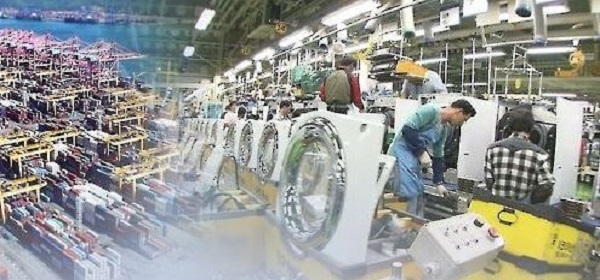South Korean companies spent more on labor costs last year than two years ago despite a fall in their sales, with export industries bearing a heavier burden in salary payments, industry data showed Wednesday.
CEO Score, which follows business performances of major corporations, analyzed 334 firms whose data were available for 2014 and 2016 for comparisons.
Results showed that their total sales came to 1,607 trillion won ($1.4 trillion) last year, of which 94.2 trillion won was spent on paying salaries.
While sales dropped 1.9 percent last year compared with 2014, labor costs increased 6.4 percent, according to the data. The sales-to-labor cost ratio rose from 5.4 percent to 5.9 percent over the two years.
CEO Score, which follows business performances of major corporations, analyzed 334 firms whose data were available for 2014 and 2016 for comparisons.
Results showed that their total sales came to 1,607 trillion won ($1.4 trillion) last year, of which 94.2 trillion won was spent on paying salaries.
While sales dropped 1.9 percent last year compared with 2014, labor costs increased 6.4 percent, according to the data. The sales-to-labor cost ratio rose from 5.4 percent to 5.9 percent over the two years.

The ratio was notably high among export industries, according to CEO Score data. For the IT industry, the ratio was 8.8 percent last year, up from 8 percent two years ago. It also went up for the steel industry from 4.8 percent to 5.9 percent.
It came to 10.2 percent for autos and parts last year, unchanged from 2014.
Within the auto industry, labor costs at local automakers accounted for 13 percent of their sales last year. The industry is being closely watched by the corporate community ahead of an important court ruling to decide whether bonuses and other fringe benefits should be counted as part of regular wages.
An inclusion would mean bigger labor costs for companies from commensurate increases in retirement funds and overtime pay, and is certain to have a domino effect in other industries.
The ratio fell for shipbuilders, machinery and facilities, from 8.8 percent in 2014 to 8 percent last year, the data showed.
By number of companies, the ratio went up for 84 of 111 export firms, data showed.
Excluding export industries, the services sector also measured higher than average with 14 percent in 2016. The figure, however, is down from 15.7 percent two years ago. Pharmaceuticals showed a ratio of 11.1 percent, food and beverages 8.6 percent, and telecommunications 6.7 percent. (Yonhap)



















![[Today’s K-pop] Treasure to publish magazine for debut anniversary](http://res.heraldm.com/phpwas/restmb_idxmake.php?idx=642&simg=/content/image/2024/07/26/20240726050551_0.jpg&u=)